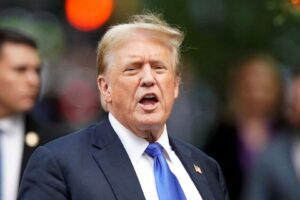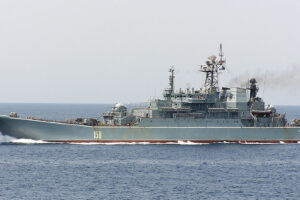The global financial architecture should be more responsive, inclusive, accountable and re-engineered to support the accelerated development of the world, especially Africa. The President of the African Development Bank, Dr Akinwumi Adesina, calls for fundamental changes.
Just a few weeks ago, the United Nations Secretary General alerted the world that the Sustainable Development Goals (SDGs) are off-track. If the SDGs are to succeed globally, they need to succeed in Africa. We must tackle global food security, climate change, debt and health pandemic preparedness given the experiences with Covid-19.
In this regard, I would like to make seven points.
First: global financial architecture is failing Africa and developing countries as they face multiple global challenges.
The global financial architecture needs to be modified to tackle more effectively global challenges, and to accelerate the achievement of the Sustainable Development Goals (SDGs). Yet, with only eight years to the target date for the SDGs, the world is off-track of achieving them.
Basically therefore, we must question the ability of the global financial architecture to serve the needs of the world, especially the needs and aspirations of developing countries, and especially Africa.
Before the pandemic hit, progress to achieve the SDGs was mixed and financing was falling short, with a USD 2.5 trillion annual SDG financing gap for developing countries. Africa will need USD 1.3 trillion annually to achieve its sustainable development needs by 2030. In addition, Africa requires up to USD 144 billion a year to recover from Covid-19 pandemic effects and rebuild economies.
Today, Africa faces three major challenges, which I call the 3 C’s: Covid, Climate and Conflicts. The solution to these challenges is the same, what I call the 3 F’s: Finance, Finance, and Finance. Yet, the available financing is very limited to tackle these challenges.
Second: global financial architecture needs to decisively tackle climate change. Climate change is devastating the economies of Africa. The continent, which accounts for only 3% in terms of historical carbon emissions, suffers disproportionately from the effects of climate change. Africa loses USD 7–15 billion annually due to climate change. This is projected to rise to USD 45–50 billion annually by 2040. Africa needs an average of USD 2.7 trillion to implement the continent’s Nationally Determined Contributions (NDCs) by 2030.
Yet, the global financial architecture provides only 3% of global climate finance for Africa. Africa received only about USD 18.3 billion annually in climate financing between 2016 and 2019. At current trends, a climate financing gap of USD 242.4 billion a year will remain through 2030. This will no-doubt undermine Africa’s efforts to support climate resilience and a just energy transition.
We should make COP28 to be hosted by the United Arab Emirates a defining moment for mobilizing greater private sector financing for climate change.
Third: global financial architecture is ill-prepared to tackle rising debt crises, especially in developing countries and Africa. The global financial architecture must respond effectively to tackle the rising debt challenges of African countries in the wake of the financial stresses posed by Covid-19, climate change and the recent conflict between Russia and Ukraine.
While median public debt has declined to 65% of GDP from the 68% in 2021 due to positive effects of debt relief efforts, including the debt service suspension initiative, debt levels are still higher than pre-pandemic level of 61%.
The structure of Africa’s debt has also changed dramatically. While bilateral debt accounts for 27% of debt compared to 52% in 2000, commercial debt accounts for 43% of total debt, compared to 20% in 2000. The expansion and fragmentation of the creditor base complicates debt resolution by the Bretton Woods Institutions.
There is urgent need to reform the current international financial architecture to make it fit for orderly debt restructuring. Debt resolution in Africa, especially outside Paris Club processes, has often been disorderly and protracted, with costly economic consequences. To avoid high debt resolution costs and limit the likelihood that debt crises re-emerge, the international community needs to push for enhanced transparency and global coordination among creditors.
It is critical to make the G20 Common Framework of debt treatment work. Of the four African countries—Chad, Ethiopia, Zambia, and Ghana—that have so far requested debt treatment under the Common Framework, none has yet completed the process to benefit from the facility.
There is an urgent need to reform the global financial and debt architecture to reduce the costs, time and legal complications for debt restructuring for African countries.
Fourth, global contingency financing is not working well for Africa.
The Special Drawing Rights (SDRs) issued by the International Monetary Fund has provided significant resources to help countries to deal with their ever-shrinking fiscal space. But of the USD 650 billion of SDRs issued, Africa got only USD 33 billion or 4.5%. The African Union has called for a re-allocation of USD 100 billion of SDRs to Africa, with a portion of it going through the African Development Bank, as a prescribed holder of SDRs.
The African Development Bank has been spearheading the call for SDR re-channelling by developed countries to multilateral development banks. Multilateral development banks can leverage the SDRs. At the African Development Bank, we can leverage the SDRs by a factor of 3–4 times. It will also allow us to provide greater financing to regional and national development banks across Africa, as part of the Finance in Common, to accelerate achievement of the SDGs.
I am delighted that the innovative model for rechannelling SDRs to multilateral development banks, developed by the African Development Bank, with the collaboration of the Inter-American Development Bank, has been determined by the International Monetary Fund staff to meet the critical reserve asset status quality for SDRs. This means SDRs donor countries can now channel their SDRs through the African Development Bank and other Multilateral Development Banks, and still count them as reserves.
This is indeed highly transformational and will be a game changer for Africa at no cost to taxpayers in SDR donor countries. What we need now is to have five lead donor countries to form a group to provide SDRs through the African Development Bank.
Fifth: current financing instruments are far from being able to leverage the resources to tackle development challenges and calls for a change in the business models of multilateral financial institutions.
The global pension funds and institutional investors have over USD 145 trillion of assets under management. The global financial architecture should focus more on how to tap into these massive resources. This will require significant changes in the business models of the multilateral financial institutions, to deploy more risk guarantees facilities, expand the use of synthetic securitization to leverage their balance sheets, and transfer some of the assets on their sovereign and non-sovereign books to the private sector to free up more space for additional lending.
The African Development Bank has been leading globally in spearheading innovative approaches to stretch its balance sheet. Many of the recommendations of the G20 Capital Adequacy report are already being implemented by the Bank well before they were recommended.
The African Development Bank, together with the World Bank and the Inter-American Development Bank implemented the first exposure exchange between multilateral development banks which freed up USD 10 billion of additional lending room for our Bank.
We were the first and only multilateral development bank globally to implement a synthetic securitization program to transfer some of the portfolio on our non-sovereign loan books to the private sector. More importantly, the transaction brought new investors together that had never had an exposure on African risk before, to take their first credit exposure on the continent.
In 2022 with the support of the United Kingdom, we concluded another groundbreaking risk transfer transaction of USD 2 billion for our sovereign portfolio, to assist with scaling up climate finance. Once again, this is the first portfolio-based risk transfer by a Multilateral Development Bank to be concluded on a sovereign portfolio that includes private sector investors.
In July of last year, our Board of Directors approved the issuance of sustainable hybrid capital, which the African Development Bank first conceived and started working on in 2021. This will be leveraged 3 to 4 times through the issuance of green, social, and sustainable bonds. It is important to note that, the African Development Bank remains the largest Multilateral Development Bank issuer of social bonds to date. A planned sustainable hybrid capital issuance is on the horizon.
In all these efforts, the African Development Bank is moving beyond project-based financing towards a portfolio-based and system-wide approach to creating new asset classes for institutional investors to pool and diversify their risks.
Sixth: for multilateral financial architecture to be more effective, there is need for greater leverage of private sector financing for development.
However, asking the multilateral development banks to do more should come with additional resources. There must be a strong review of the capital adequacy of the multilateral development banks. Expanding work to leverage private sector will consume risk capital, yet available risk capital is extremely low.
The reality is that multilateral development banks depend largely on callable capital with only a small share of their capital being paid in capital. This limits its effective risk capital that it can use to de-risk and leverage private sector financing at scale, due to strict prudential limits that it and all other multilateral development banks must respect to keep their crucial triple A credit rating. There should be a significant increase in the capital of multilateral development banks, but more importantly, the share of their deployable risk capital if the idea of going from “billions to trillions” is to materialize.
The Africa Investment Forum (AIF), which the African Development Bank and its partners launched in 2018, has become the premier private investment platform for Africa. It has attracted over USD 142 billion of investment interests to Africa in just four years, covering 150 projects, from African and global private sector investors, as well as institutional investors. The Africa Investment Forum for 2023 will be held on 8–10 November in Marrakesh, Morocco.
The Alliance for Green Infrastructure in Africa (AGIA), launched by the African Development Bank, Africa50 and several partners, will help mobilize USD 10 billion of private sector financing for green infrastructure in Africa. It will contribute to the G7 Partnership for Global Infrastructure Investment goal of mobilizing USD 600 billion for financing quality infrastructure.
Seventh: regional efforts should be promoted to tackle systemic risks in Africa, with regional safety nets to address the myriad of exogenous shocks, to complement the global safety net of the International Monetary Fund.
Africa is the only region of the world that does not have liquidity buffers to protect it against shocks.
To protect Africa from future economic shocks, the African Development Bank and the African Union are working together to establish an African Financial Stability Mechanism.
During the 35th Ordinary Session of the Assembly of the African Union, Heads of State and Government called for the establishment of the African Financial Stability Mechanism and directed the African Union Commission and the African Development Bank Group to work with all relevant stakeholders to accelerate the operationalization of the mechanism and its growth. The African Financial Stability Mechanism will complement the global safety nets offered by the IMF to offer liquidity support for countries in times of crisis.
We need inclusive multilateralism with equity and fairness in representation in the Bretton Wood Institutions.
Achieving the reform of the global financial architecture requires that Africa’s voice be strengthened on the Board of the IMF, where the continent has just two seats.
At the end of the day, the global financial architecture should be more responsive, inclusive, accountable and re-engineered to support the accelerated development of the world, especially Africa.
We must ensure that the priorities and challenges of Africa are on the front burner of the reform of the global financial architecture.
Africa’s needs must never be forgotten.
Source: New Africa Magazine
















